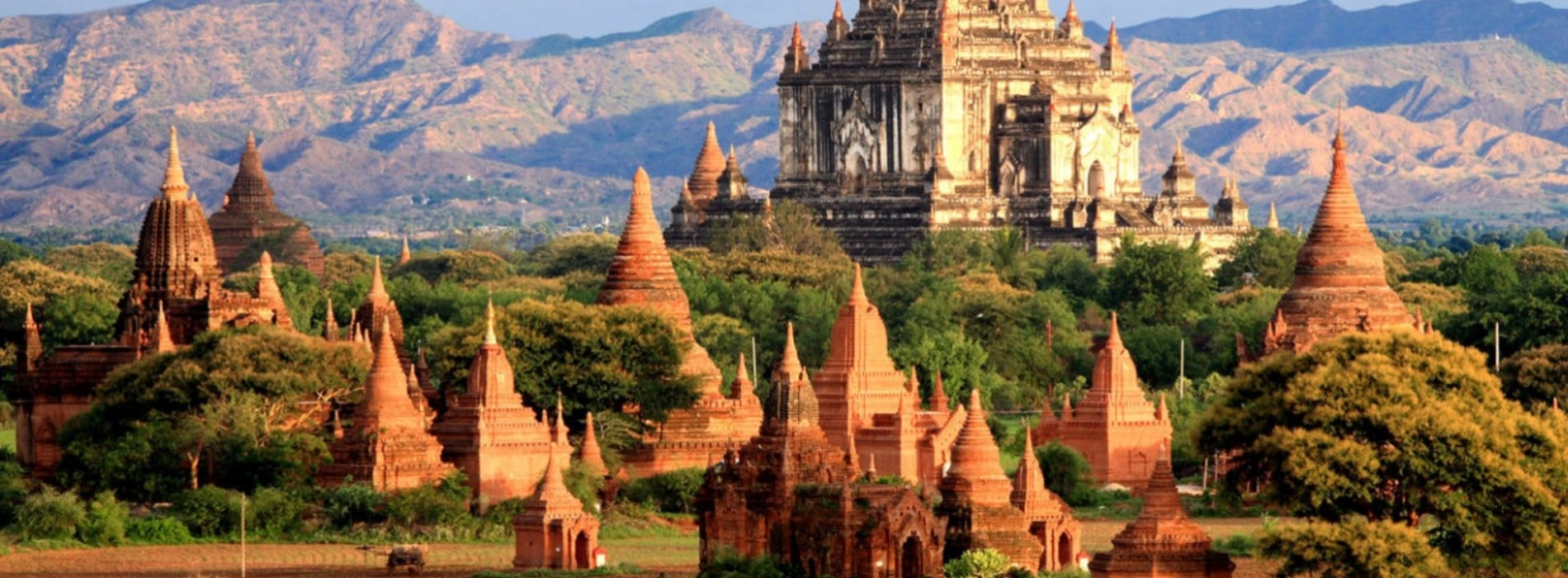Bagan

Not as famous as Yangon or Mandalay, but Bagan is still quite loved by tourists thanks to the harmonious blend of nature and architecture. It is praised as one of the places with the most stunning sunrise views that you must witness at least once in your lifetime. Read the following travel guide to understand more about why this city is so captivating.
Bagan is about 9 hours by car from Yangon and about 145km southwest of Mandalay. It was once the capital of the Pagan Dynasty from the 9th to the 13th century, lasting for 230 years and creating over 4,000 temples and pagodas. Today, more than 2,000 monuments still remain. For this reason, Bagan is also considered Myanmar's "archaeological city," and its ancient sites are comparable to the Angkor Wat complex in Cambodia.
In addition to the ancient architecture with many traces of history, tourists visiting Bagan are also captivated by its unexpectedly stunning natural landscapes. When the first rays of sunrise appear over Bagan, piercing through the mist, and shine upon the thousands of temple spires, it feels as though the city awakens from the dark night. One experience you cannot miss is watching the sunrise and the entire city of Bagan from a hot air balloon. Many tourists come here just to participate in this unique activity.

Bagan is about 9 hours by car from Yangon and about 145km southwest of Mandalay
In addition to its ancient architecture, which bears many traces of history, visitors to Bagan are also captivated by the stunning natural landscapes. When the first rays of sunrise appear over Bagan, filtering through the mist and shining on thousands of pagoda peaks, it feels like the city is waking up from the darkness of night. One experience you can't miss is watching the sunrise and the entire city of Bagan from a hot air balloon. Many tourists come here to take part in this unique activity.
Overall, Bagan is warm year-round. The climate has two seasons: the dry season and the rainy season. The dry season lasts from October to May, though from March to May, the weather is warmer (with temperatures around 35-40°C). The rainy season starts in June and ends in early October.
The best time to visit Bagan is from mid-October to February. During this time, you can fully enjoy the sights of the Bagan plain with a hot air balloon ride over the area. Hot air balloons in Bagan only operate from October to April, so you won’t want to miss this unforgettable experience during your trip to Bagan.

Bagan is warm year-round
Since there are no international flights to Bagan, you need to go through Yangon or Mandalay before reaching Bagan. Nyaung U is the main entry point to the city, where you can find a train station, a domestic airport, and a harbor for boats.
Life in Bagan is very peaceful. Cycling around the city is the best way to experience the calm lifestyle here. Or, you can rent an electric scooter if you want to explore more places in Bagan without getting tired.
Located in Old Bagan, Ananda Temple is one of the most majestic Buddhist monuments on the Bagan plain. It is the most famous temple among the many temples in Bagan. The temple dates back to the late 11th century and is one of the Buddhist temples that devotees still frequently visit. Built in 1090 under King Kyanzittha, this cross-shaped temple with multiple terraces is the best-preserved Buddhist attraction in Bagan. Ananda Temple is easily recognizable with 554 glazed bricks depicting stories of the life of the Buddha.
Additionally, when you visit, you can spot the Ananda Temple from afar due to its impressive 55-meter high stupa, covered in gold. You will also see four large Buddha statues, each nearly 10 meters tall. In fact, any trip to the wonders of Bagan would not be complete without visiting Ananda Temple.

Ananda Temple is one of the most majestic Buddhist monuments on the Bagan plain
Shwezigon is a golden pagoda in Bagan, similar to the Shwedagon Pagoda in Yangon. Completed during the reign of King Kyanzittha (1084-1113), Shwezigon Paya is one of the most revered religious sites within the magnificent temple complex of Bagan.
It is important to note that this pagoda is similar to a replica of the Tooth Relic Temple in Sri Lanka (three other replicas are preserved in Tankyi Taung, Lawkananda, and Tuyin Tuang pagodas). Shwezigon Paya stands out with its beautiful wood carvings, a 4-meter-tall bronze Buddha statue, and giant lion statues at the entrance.
This is considered the largest temple and has the most unique architecture compared to other structures in Bagan. The temple features a pyramid-like design and was built during the reign of King Narathu. Construction lasted for 3 years before the king was assassinated, leaving the temple unfinished. To this day, the reason for its pyramid shape remains unknown.

Dhamma Yangyi Temple
Bagan is a mesmerizing destination that combines rich history, stunning architecture, and serene landscapes. With its vast collection of temples, such as the iconic Ananda Temple, Shwezigon Pagoda, and Dhamma Yangyi Temple, Bagan offers a unique glimpse into Myanmar’s cultural and spiritual heritage. Its peaceful atmosphere and historical significance make it a must-visit location for any traveler seeking both beauty and history.